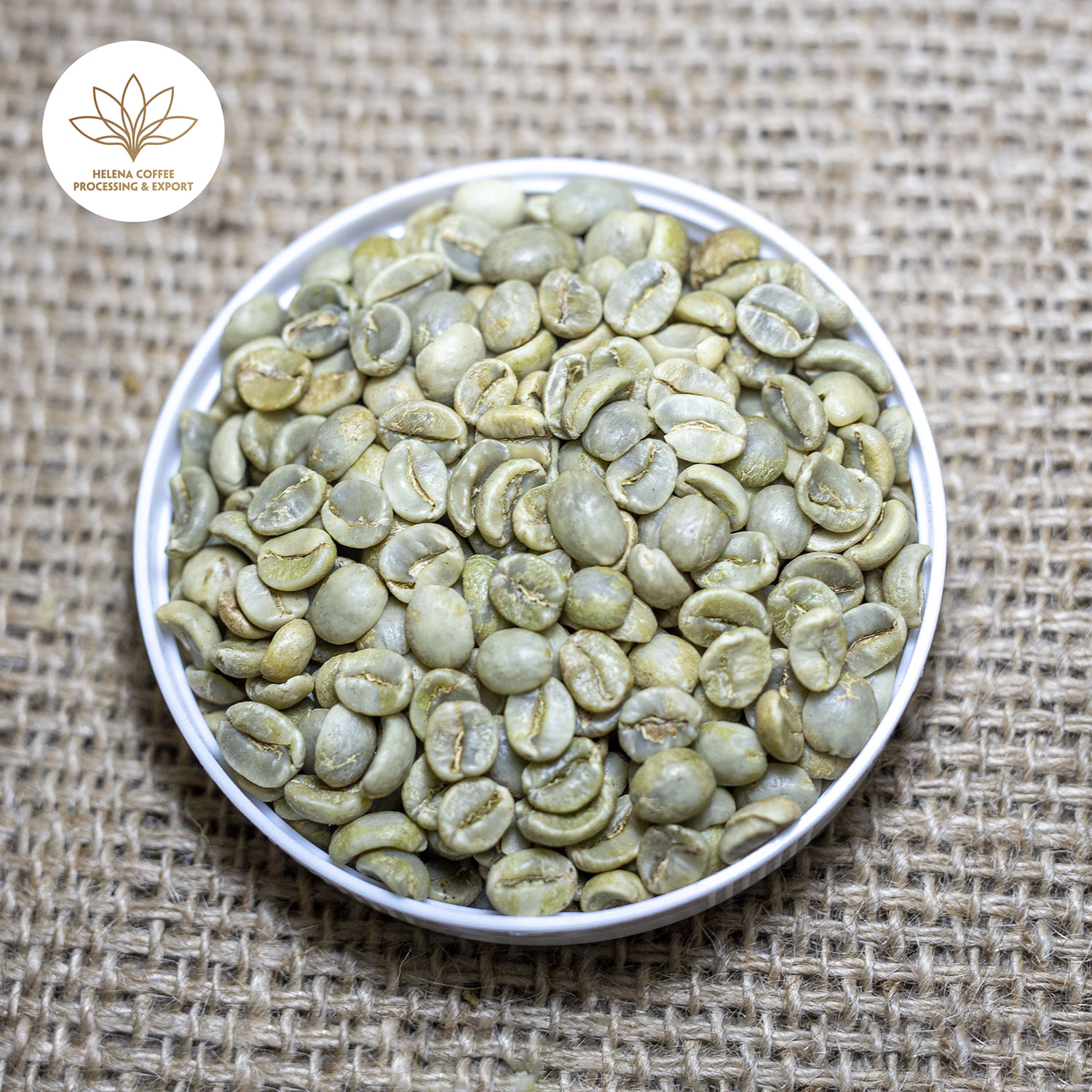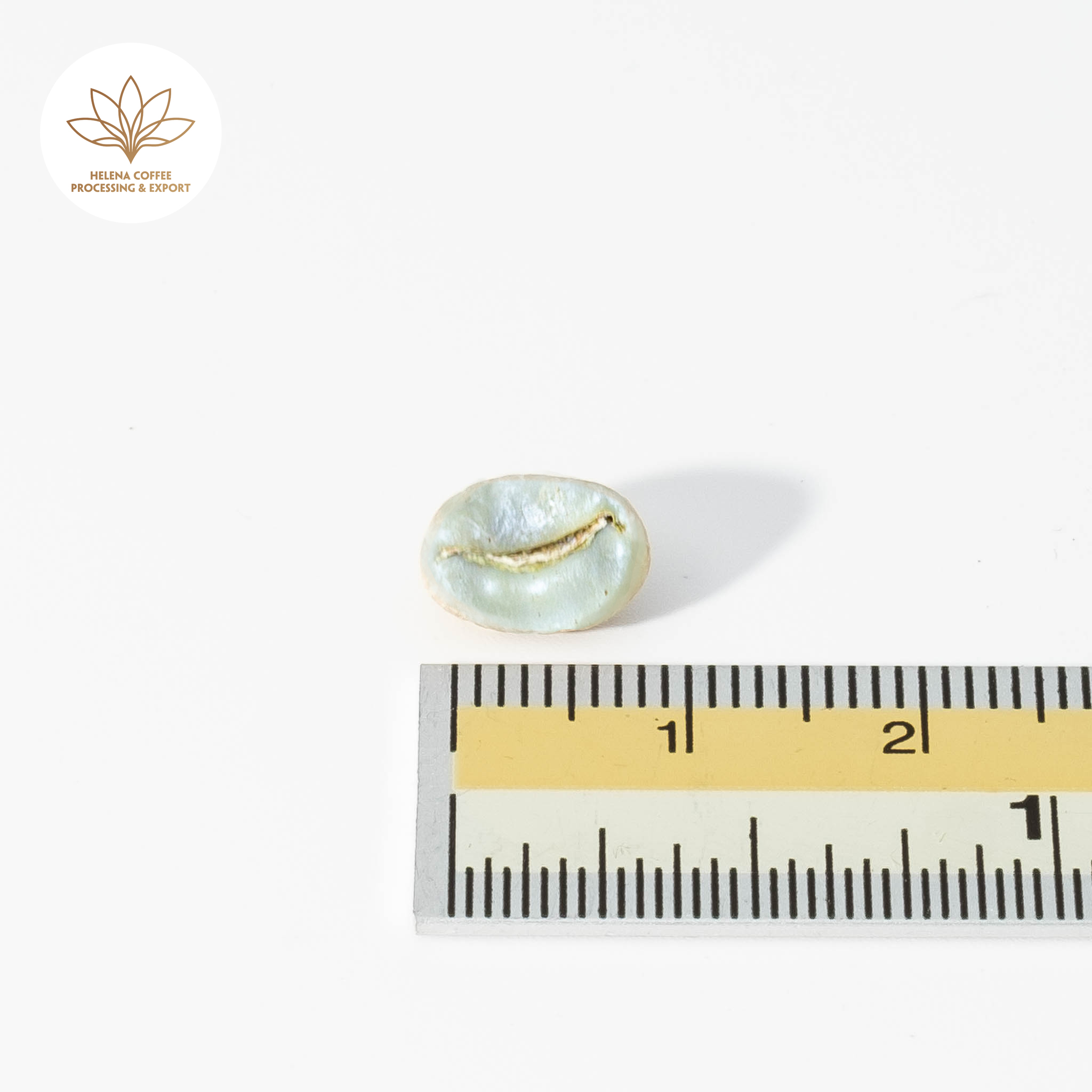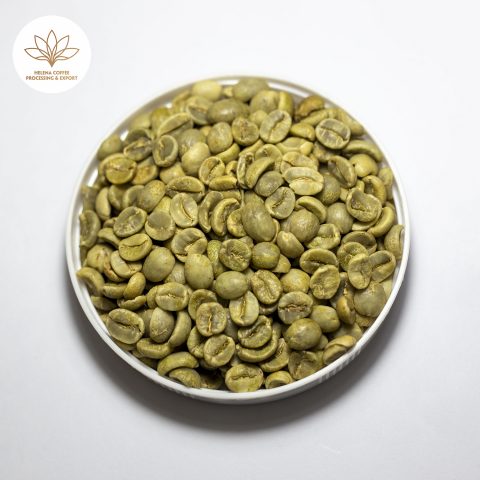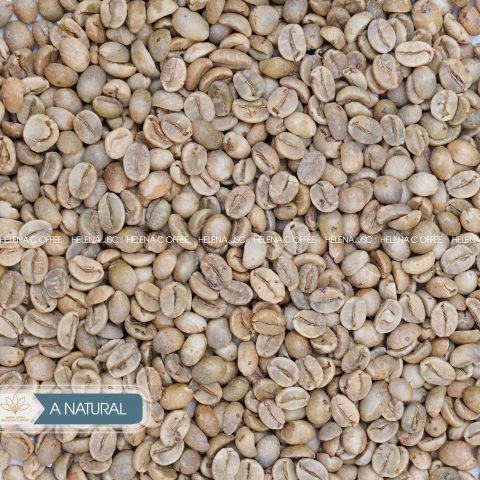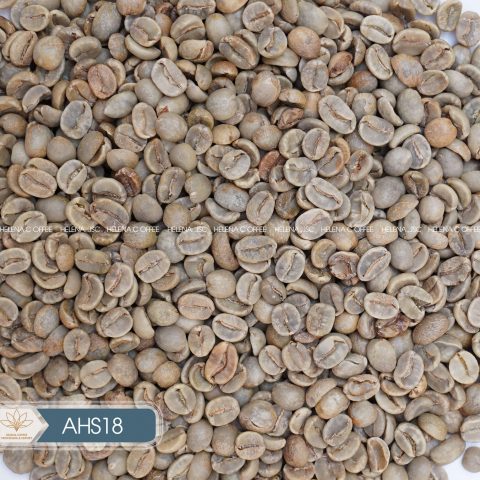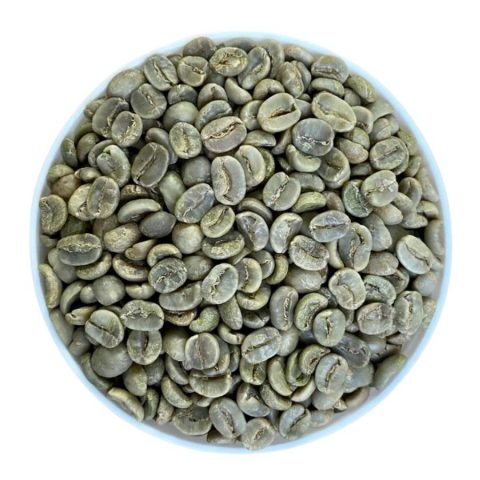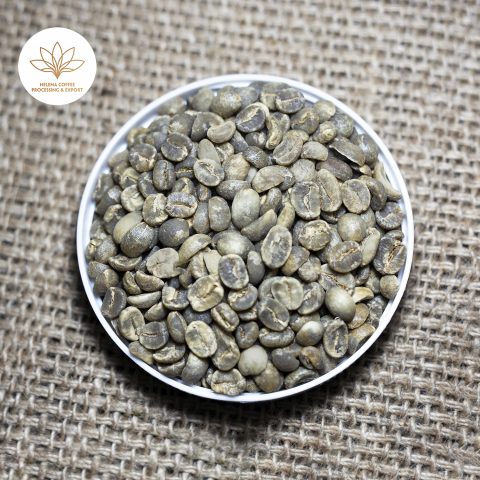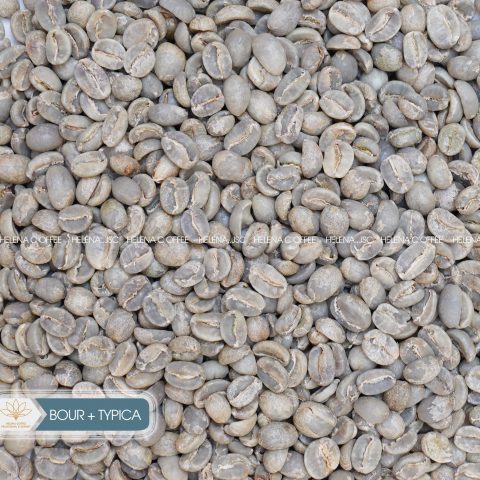Vietnam Wet Processed Arabica Green Coffee (Fully Washed) – Grade 1 (S16, S18)
- Home
- Products
- Vietnamese Arabica Green Coffee Beans
- Vietnam Wet Processed Arabica Green Coffee (Fully Washed) – Grade 1 (S16, S18)
Vietnam Wet Processed Arabica Green Coffee (Fully Washed) – Grade 1 (S16, S18)
$6.20 $5.26
- Variety: Arabica
- Region: Cau Dat, Lam Dong
- Elevation: 1350m
- Processing: Wet Processing (Fully-Washed)
- Ripe Rate: 98-99%
- Moisture: 12.5%
- Foreign Matter: 0.1%
- Black: 0.1%
- Broken: 0.1%
- Rate on Sieve: 90%
- Bean size (Sieve): S18, S16
- Capacity: 6000 tons/year
- Price per kilogram: $/kg
Related products
You may also like…



Vietnam Wet Processed Arabica Green Coffee (Fully Washed): Arabica has an intense aroma, ethereal sour taste, slightly bitter taste, and sweet aftertaste, described as the fresh taste of the early morning, making the drinker unable to forget the taste of Vietnam Arabica once tried past.
At Helena coffee, we choose the raw material of wet-processed green Arabica coffee. When done correctly, this processing method helps to ensure the intrinsic quality of the coffee beans, resulting in green coffee of uniform color and quality, avoiding defects that adversely affect the tasting quality.
Coffee produced by wet processing is always of better quality and of higher commercial value.
1. Vietnam Wet Processed Arabica Green Coffee – The most popular coffee in the world
Arabica is the most popular coffee in the world. In Vietnam, Arabica from the Vietnam region is famous for its delicious taste, rich flavor, and excellent quality. To get the best product, Helena Coffee has carefully collected and processed to preserve the original flavor of coffee beans.
Arabica has an intense aroma, ethereal sour taste, slightly bitter taste, and sweet aftertaste, described as the fresh taste of the early morning, making the drinker unable to forget the taste of Vietnam Arabica once tried past once.
Besides the enjoyment value, Arabica also has health benefits because they are low in caffeine, so they are completely healthy for the elderly and people with heart problems. In addition, Arabica does not cause insomnia, has the effect of slowing down aging and is suitable for women.
2. How to produce Arabica Fully Washed Processing in Vietnam?
Wet processing is more complicated than dry processing and is often applied to Arabica coffee. The main feature of damp processing is that the flesh between the beans and the coffee skin is removed before the coffee is dried.
This method requires specialized machinery and consumes a significant amount of water, so there must be a reasonable treatment process to ensure both safeties for the environment.
When done correctly, this processing method helps to ensure the intrinsic quality of the coffee beans, resulting in green coffee of uniform color and quality, avoiding defects that adversely affect the tasting quality. Coffee produced by wet processing is always of better quality and of higher commercial value.
The wet processing process mainly consists of 5 steps:
- First step: Cleanse impurities. After harvesting, no matter how careful it is, there is still a quantity of dry, unripe, or wormed coffee cherries that will reduce the quality of the coffee batch. In addition, small twigs, coffee leaves, rocks and dirt, and other impurities will be mixed in the coffee lot through the harvest. Preliminary processing, grading, and cleaning of ripe coffee cherries are essential and should be done soon after harvest and usually done by washing ripe coffee cherries in a bucket full of running water. The coffee then goes through a vibrating machine to screen the beans, which separates ripe and unripe cherries, large and small.
- The second step: This stage is done by a machine that rubs, peels, and removes the flesh and mucus from the coffee beans. After sorting, it is necessary to immediately rub the coffee berries to avoid affecting the quality of the coffee. This stage separates the skin, meat, mucus, and coffee beans, and the coffee is cleaned. This step makes an essential difference between the dry and wet processing methods.
- The third step: is the fermentation process. Since the pulp and mucilage of the fruit that is separated from the bean by mechanical means are often left around the coffee beans and will have an adverse effect on the quality of the coffee, further work must be done—cleaned by chemical means. Grain coffee beans are aged in large vats and left to ferment by natural enzymes and additional enzyme preparations. For most coffees, the mucus removal process takes 24 to 36 hours, depending on the thickness, temperature of the mucus layer, and concentration of enzymes. After fermentation, the mucus around the coffee beans loses its dense texture and is easily removed by water.
- Fourth step: Drying stage. After fermentation, coffee beans are washed with clean water, containing about 57% – 60% moisture content, and transferred to the drying stage. The drying process ends when the coffee moisture level is 12.5%. Coffee beans can be dried in a concrete yard or by electric drying. Sun exposure takes between 8 and 10 days, depending on ambient temperature and humidity. Dryer-dried coffee dries faster. However, the process must be carefully controlled to be satisfactory and economical without damaging the coffee quality.
- Fifth step: Storage. After drying, the parchment coffee will be stored and milled into green coffee before packing for export or being put into the roaster during the roasting process.
3. Where to buy Vietnam Arabica?
With many years of experience in production, processing, and quality management, Helena Coffee Vietnam is proud to be a reasonably priced supplier of high-quality and stable wet processed Arabica green coffee.
The successful construction of a closed model from the stage of collection, selection, and preliminary processing to the location of operation, supply, and distribution of products; helps Helena Coffee Vietnam optimize the quality control process and product stability; This makes the products that Helena Coffee Vietnam provides to customers at an excellent price with very high quality.
Today, more and more varieties of Arabica have newer, more exotic processing methods, giving a unique flavor. However, Vietnam wet processed Arabica is still the most popular and consumed product because of its stability. Taste and reasonable price. If you have any needs, please get in touch with Helena Coffee Vietnam for the advice!
Certifications



Discover the Alluring Aromas of Vietnamese Arabica Coffee
Vietnamese Arabica coffee captivates the senses with its exquisite flavors, hailing from the enchanting highlands of Cau Dat – Da Lat. As the country’s hidden gem, this exceptional bean boasts a unique and refined taste profile that sets it apart from its more widely-known counterpart, Robusta.
The cool climate and fertile soil of Cau Dat – Da Lat nurture these Arabica beans to perfection, allowing them to develop their full aromatic potential. As you indulge in the rich and complex notes of Vietnamese Arabica, you’ll uncover a delightful world of flavors that embody the dedication and passion of its growers.
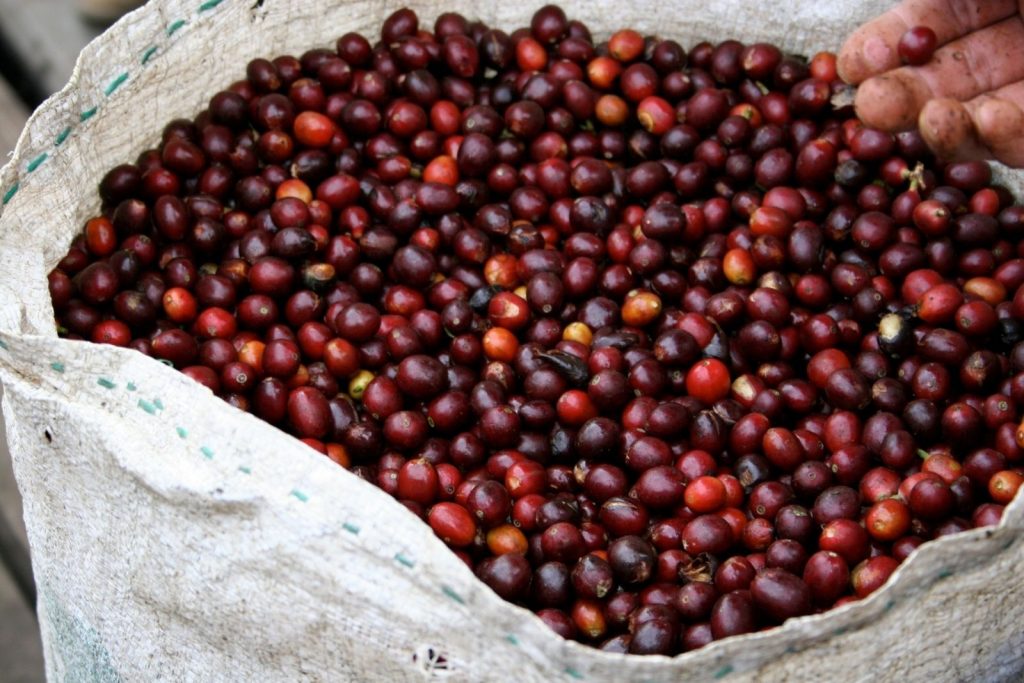
Environment
Precipitation, temperature, and humidity have a lot of say in a coffee’s maturation, overall flavor, and quality. Many coffee-producing countries are either primed for growing success or use alternative methods to improve their ecosystem.
Precipitation
1500m+
Temperature
17℃
Humidity
71%
Attitude
Elevated at over 1500 meters above sea level, the captivating Cau Dat – Da Lat region features a consistent temperate climate, with maximum temperatures never surpassing 33°C and minimums remaining above 5°C. The area’s fertile basaltic soil presents the optimal conditions for cultivating premium Arabica coffee.
Cau Dat’s distinguished Arabica exhibits a sophisticated blend of mild acidity and a hint of bitterness. Its transparent amber hue embodies the pristine environment from which it originates. The refined aroma harmonizes notes of syrup, fresh fruits, honey, toasted bread, and sunlit afternoons, creating a memorable sensory experience that captivates even the most discerning coffee aficionados.
Cau Dat’s Arabica confidently stands among the world’s elite coffee varieties, showcasing its unparalleled quality and the extraordinary potential of Vietnamese coffee.
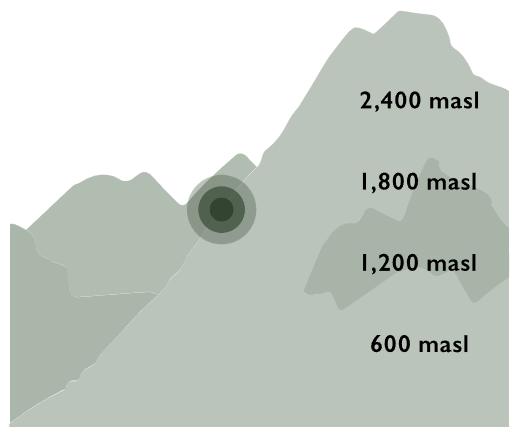
Processing
A coffee’s process describes how the seed (aka the coffee bean) is separated from the coffee cherry. Popular methods include washed, dry, and honey, but there are many other processes that put special emphasis on different aspects of these methods.
Washed
Fully Washed
Dried
Sun-dried
Natural
Fully Washed
Timeline
Harvest and export times are based off when a particular coffee will be at its peak quality. Cherries picked at the start of the harvest season tend to be underdeveloped, and those picked at the end are often overdeveloped, so producers aim for that sweet
Harvest
Export
Dec – Sept
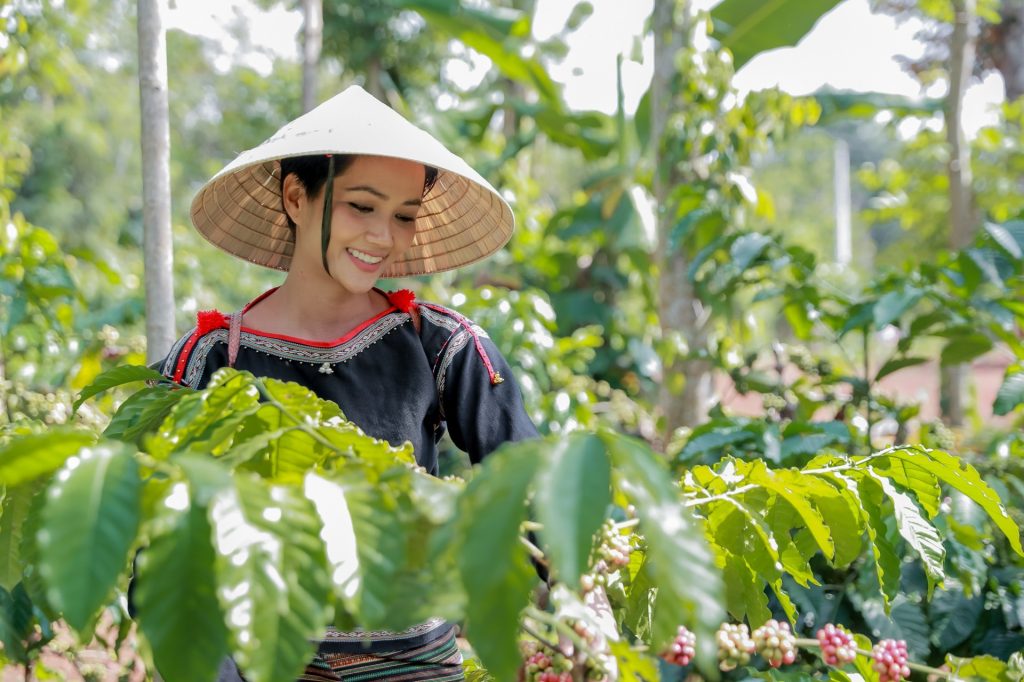
Cau Dat - Da Lat
Nestled just 24km from Da Lat city in Lam Dong Province, Cau Dat resides within the renowned Central Highlands of Vietnam. Boasting an ideal elevation and climate, this region has emerged as one of the premier locations for growing exceptional Arabica coffee.
With a vast expanse of 1,110 hectares dedicated to coffee cultivation—86% of the agricultural area—Cau Dat focuses predominantly on Arabica coffee, which makes up 98% of the total coffee crop. Remarkably suited to the local natural conditions, Cau Dat’s coffee plants thrive with minimal impact from pests. Each hectare yields an impressive 18-20 tons of fresh coffee cherries, equivalent to 4 tons of coffee beans, outpacing productivity in many other regions.
Discover the magic of Cau Dat’s Arabica coffee, where the perfect blend of elevation, climate, and dedication to quality come together to create a truly remarkable and unforgettable coffee experience.
Cau Dat has a total area of 1,110 hectares of coffee growing, accounting for 86% of the agricultural area. Especially, the area for Arabica coffee accounts for 98% of the total. Cau Dat coffee species generally really suit the natural conditions of this land and barely get affected by pests. Each hectare of the cultivated area can provide 18-20 tons of fresh coffee berries, equivalent to 4 tons of coffee beans. The productivity is much higher than other types.
